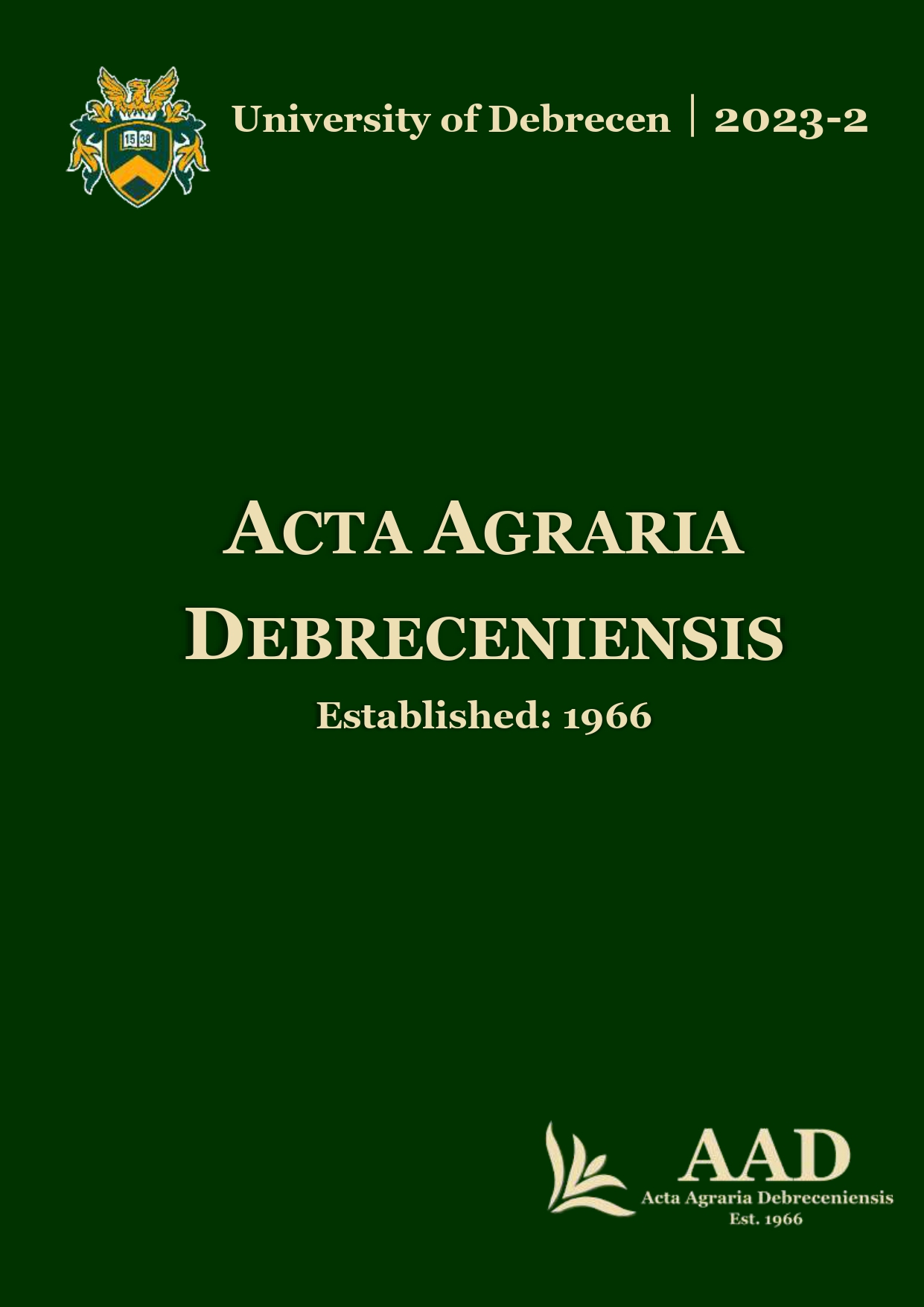Ecological value of wood energy plantations in the support of some animal groups
Authors
View
Keywords
License
Copyright (c) 2023 by the Author(s)

This work is licensed under a Creative Commons Attribution 4.0 International License.
How To Cite
Accepted 2023-07-28
Published 2023-12-01
Abstract
Today, some environmental problems have reached such severe proportions that it is no longer enough to recognise them, but environmentally friendly solutions must be used to reduce them. The reduction in the area of natural forests of native species is causing problems in several ways.
This research aimed to highlight how environmental, conservation and economic interests can be reconciled. In addition to natural forests, wood energy plantations are becoming increasingly important. Energy import dependency is a problem for most countries, for which wood energy plantations can partly offer an alternative. Native forests can be protected, and their area increased where possible. Meanwhile, energy plantations can be established in areas with low agricultural productivity.
In this experiment, I studied a plantation of Pedunculate Oak (Quercus robur), a Black Locust (Robinia pseudoacacia) and a Paulownia (Paulownia Shan Tong). I selected burrowing birds and ground-dwelling arthropods as indicator groups. I did this by establishing a nesting colony and soil trapping. I wanted to demonstrate that, in addition to natural forests, wood energy plantations have a role not only in economic terms but also in maintaining certain animal groups. Soil trapping tests were carried out in all three tree plantations.
The obtained results showed that in the Paulownia plantation, the occupancy rate of nest boxes was almost 100%, while in the Black Locust plantation it was around 30%. Among the species that occupied the nesting sites, the Common Starling (Sturnus vulgaris) and the Eurasian Tree Sparrow (Passer montanus) were more abundant, while Great Tit (Parus major) was present in the Black Locust plantation. These are opportunistic species for which nesting opportunity is the most important factor, since their feeding area (in the case of the Common Starling and the Eurasian Tree Sparrow) is not typical of the nesting area. The soil trap investigations show that there are no significant differences in the composition of the arthropod group (beetles, spiders) in the study areas.
References
- Andrásevits, Z. (2006): A mező- és erdőgazdálkodás összehangolt fejlesztésének lehetőségei a dunántúli vállalkozásokban. Doktori értekezés. Pannon Egyetem Georgikon Mezőgazdaságtudományi Kar, Keszthely. 160 p.
- Bartholy, J.–Breuer, H.–Pieczka, I.–Pongrácz, R.–Radics, K. (2013): Megújuló energiaforrások. Eötvös Loránd Tudományegyetem. 127 p.
- Clatterbuck, W.K.–Hodges, D.G. (2004): Tree Crops for Marginal Farmland. Paulownia. The University of Tennessee Extension, Knoxville, pp. 1-32.
- Csipkés, M. (2011): Egyes energia-növények gazdasági elemzése, valamint hatásuk a földhasználatra. Doktori értekezés. Debreceni Egyetem Gazdaságtudományi Kar, Debrecen. 220 p.
- Gyuricza, Cs. (2014): Energianövények, biomassza termelés és felhasználás. Gödöllő. 143 p.
- Jay, A. (1998): Paulownia plantation experiences and profitable timber production. In: Australian Forest Growers, Conference Proceedings, Lismore, pp. 199–214.
- Jiang, Z.–Gao, L.–Fang, Y.–Sun, X. (1994): Analysis of Paulownia-Intercropping Types and Their Benefits in Woyang County of Anhui Province. Forest Ecology and Management, Vol. 67, No. 1-3, pp. 329-337. DOI: 10.1016/0378-1127(94)90027-2
- Joshee, N. (2012) Paulownia: A Multipurpose Tree for Rapid Lignocellulosic Biomass Production. In: C. Kole, C. P. Joshi and D. Shonnard, Eds., Handbook of Bioenergy Crop Plants, Taylor & Francis, Boca Raton, pp. 671-686. DOI: 10.1201/b11711-31
- Kádár, F.–Samu F. (2006): A duplaedényes talajcsapdák használata Magyarországon. Növényvédelem 42 (6): 305–312.
- Kaymakci, A.–Ayrilmis, A. (2013): Surface Roughness and Wettability of Polypropylene Composites Filled with Fast-Growing Biomass: Paulownia elongata Wood. Journal of Composite Materials. DOI: 10.1177/0021998313480199
- Megyes, A. (2013): Energianövény termesztési technológiák. Debreceni Egyetem. Agrár- és Gazdálkodástudományok Centruma. 50 p.
- Országos Erdészeti Egyesület (2016): Az év fája 2015. Kocsányos tölgy. Quercus robur. 16 p.
- Song, Y. (1988): Nutritive Components of Paulownia Leaves as Fodder. Chemical Industry and Forest Products, Vol. 8, pp. 44-49.
- Szabó, F.M.–Juhász, L. (2018): Egy látványos és gyorsan növő fa. Magyar Mezőgazdaság, 73. évf.: 18: 22-23.
- Tisserat, B.–Joshee, N.–Mahapatra, A.K.–Selling, G.W.–Finkenstadt, V.L. (2013): Physical and Mechanical Properties of Extruded Poly(lactic acid)-Based Paulownia elongata Bio-Composites. Industrial Crops and Products, Vol. 44, pp. 88-96. DOI: 10.1016/j.indcrop.2012.10.030
- Van Balen, J.H.–Potting, R.P.J. (1990): Comparative reproductive biology of four blue tit populations in the Netherlands. Ecol. Science., Vol. 24: 19-38. DOI: 10.1007/978-3-642-75110-3_2
- Wang, Q.–Shogren, J.F. (1992): Characteristics of the Crop- Paulownia System in China. Agriculture, Ecosystems & Environment, Vol. 39, No. 3-4, pp. 145-152. DOI: 10.1016/0167-8809(92)90050-L

 https://doi.org/10.34101/actaagrar/2/13127
https://doi.org/10.34101/actaagrar/2/13127